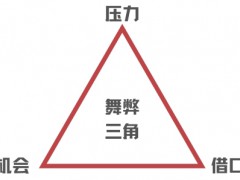• 撒哈拉以南非洲地区的天然气日产量预计到2030年将增至270万桶油当量。
• 由于全球天然气需求持续增长,进口国面临供应难题,非洲地区的天然气生产前景呈现一片光明。
• 莫桑比克、南非和毛里塔尼亚等国的未开发深水气田可能成为非洲地区天然气产量增长的主要驱动力。
据美国油价网2月23日报道,挪威著名能源研究和商业情报公司雷斯塔能源公司(Rystad)的研究显示,撒哈拉以南非洲地区未开发的天然气储量将在2030年前得到释放,由于大量未开发的深水资源,非洲地区天然气日产量将从去年的130万桶油当量增加一倍多,到2030年达到270万桶油当量。
尽管迄今为止,深水开发在非洲地区的液体产量中发挥着关键作用,平均约占年产量的50%,但此类油田的天然气产量却很少。 然而,随着未来几年深海天然气储量的激增,这种情况有望改变。 深水开发项目的日产量将从去年的12万桶油当量 (占大陆架和陆地总产量的9%)飙升至100万桶油当量 (占总产量的38%)。
由于全球对天然气的需求持续上升,以及进口国面临供应难题,非洲地区的天然气生产前景呈现一片光明。 深水油气产量预计将在21世纪30年代进一步增长,到2035年前,天然气日产量将在5年内翻一番,达到210万桶油当量。 根据估计的可采储量、开发时间表和计划,到2035年前,大陆架和陆地储量将增加,占该地区预计400万桶油当量/天天然气总产量的46%左右。
由于蓬勃发展的生产前景,绿地投资预计也将飙升。 去年,非洲地区天然气和液体未开发地区的资本支出总额为120亿美元,其中80亿美元用于深水开发。 到2030年前,总绿地投资将飙升至近400亿美元,其中240亿美元将用于深水项目。
未来几年,撒哈拉以南非洲地区的产量预计将大幅增加,特别是天然气产量将大幅增加。 尽管在陆上已经获得了一些显著的发现,但深水海上资源的开发将为非洲地区带来一个快速增长的时期。
撒哈拉以南非洲地区的天然气产量一直处于历史最低水平,但由于莫桑比克、南非和毛里塔尼亚等国存在大量未开发的深水气田,这一状况有望改变。法国道达尔能源公司位于莫桑比克的Area 4 LNG项目的深水油藏预计拥有23亿桶油当量的天然气储量,其中1号生产线和2号生产线预计将于2028年投产。 南非Brulpadda油田的储量为7.15亿桶油当量,而英国石油公司运营的横跨毛里塔尼亚和塞内加尔海上边界的Greater Tortue Ahmeyim浮式液化天然气(FLNG)的储量估计为3亿桶油当量。
目前撒哈拉以南非洲地区的潜在可采储量中,约60%位于深水区,其中近60%为天然气。 莫桑比克拥有该地区52%的可采天然气资源,其次是塞内加尔-毛里塔尼亚海域,合计20%,坦桑尼亚约12%。 尼日利亚还拥有大量可采天然气储量,这将有助于预期产量的增长。
另一方面,撒哈拉以南非洲地区的石油日产量预计将在20多年来首次降至400万桶以下,但将在2028年恢复,并在2020年恢复到440万桶左右的水平。 液体日产量预计也将在21世纪30年代增长,到2035年的总产量约为500万桶。
非洲地区可开采的深水资源中,液体资源约占40%,其中尼日利亚占33%,安哥拉占31%。 加纳和莫桑比克是另外两个拥有大量未开发资源的国家,分别占该地区深水液体储量的8%和7%。
然而,撒哈拉以南非洲地区的深水项目存在风险,由于开发成本高、融资困难、财政体制问题和其他地面风险,项目可能会被推迟或不被批准。 由于各大石油公司继续控制上游支出,并推进能源转型,以帮助降低排放,许多深水项目在起步阶段将面临挑战。
总体而言,大型深水项目主要致力于降低上游成本、减少排放、增加可再生能源和能源转型,这意味着在投资分配方面,此类深水项目往往不得不退居二线。 欧洲银行正在收紧为高排放碳氢化合物项目融资的规定,而非洲银行可能难以提供必要的融资。
李峻 编译自 美国油价网
原文如下:
Africa To See Gas Supply Boom Through 2030
· Sub-Sahara Africa is expected to see gas output rise to to 2.7 million boepd in 2030.
· As global demand for gas continues to rise and importing countries suffer supply headaches, the production outlook for the region is promising.
· Significant undeveloped deepwater finds in countries including Mozambique, South Africa and Mauritania could become the main drivers for growth.
Untapped natural gas supplies in Sub-Saharan Africa are set to be unleashed this decade, with output more than doubling from 1.3 million barrels of oil equivalent per day (boepd) in 2021 to 2.7 million boepd in 2030 due to vast undeveloped deepwater resources, Rystad Energy research shows.
While deepwater developments have played a crucial role in the region’s liquids output to date, averaging about 50% of annual production, gas output from such fields has been minimal. That is expected to change, however, as gas from deepwater reserves will surge in the coming years. Production from deepwater developments will skyrocket from 120,000 boepd in 2021, 9% of total output including shelf and land production, to 1 million boepd accounting for 38% of total output.
As global demand for gas continues to rise and importing countries suffer supply headaches, the production outlook for the region is promising. Deepwater production is projected to grow further in the 2030s, with gas output more than doubling in five years to 2.1 million boepd by 2035. Gas from shelf and land reserves will increase by 2035 and will contribute about 46% of the expected 4 million boepd of total gas output from the region, based on estimated recoverable reserves, development timelines and plans.
As a result of the booming production outlook, greenfield investments are also projected to soar. Gas and liquids greenfield capital expenditure in the region totaled $12 billion in 2021, with $8 billion spent on deepwater developments. By 2030, total greenfield investments will surge to almost $40 billion, of which $24 billion will go on deepwater projects.
“Production in Sub-Saharan Africa is expected to increase significantly in the coming years, with natural gas output in particular set to see a boom in output. Although there have been notable onshore finds, the development of deepwater offshore resources is going to usher in a period of rapid growth for the region,” says Siva Prasad, senior upstream analyst with Rystad Energy.
Natural gas production in Sub-Saharan Africa has been historically low, but that looks set to change due to significant undeveloped deepwater finds in countries including Mozambique, South Africa and Mauritania. Deepwater reservoirs tagged to TotalEnergies’ Area 4 LNG project in Mozambique, where trains 1 and 2 are expected to start production in 2028, hold an estimated 2.3 billion barrels of oil equivalent (boe) in gas reserves. South Africa’s Brulpadda field – also operated by the French major – holds 715 million boe, while the BP-operated Greater Tortue Ahmeyim floating liquefied natural gas (FLNG) development straddling the maritime boundary of Mauritania and Senegal has an estimated 300 million boe.
Of the current potential recoverable reserves across Sub-Saharan Africa, about 60% lie in deepwater regions, of which close to 60% is gas. Mozambique dominates with 52% of the total recoverable gas resources in the area, followed by the Senegal–Mauritania maritime region with a combined 20% and Tanzania with about 12%. Nigeria also holds significant recoverable reserves of gas that will contribute to the expected output hike.
On the flip side, Sub-Saharan African liquids production is expected to drop below 4 million barrels per day (bpd) for the first time in more than 20 years but will recover by 2028 and return to 2020 levels of around 4.4 million bpd by the end of the decade. Liquids output is projected to grow in the 2030s, too, with total production of approximately 5 million bpd in 2035.
about 40% of the total recoverable deepwater resources in the region are liquids, of which Nigeria accounts for 33% and Angola has 31%. Ghana and Mozambique are two other countries with significant untapped resources, amounting to 8% and 7%, respectively, of the region’s deepwater liquids reserves.
Deepwater projects in Sub-Saharan Africa are, however, risky and can be delayed or unsanctioned due to high development costs, challenges accessing financing, issues with fiscal regimes and other above-ground risks. With majors continuing to rein in upstream spending and plow a course on the energy transition to help lower emissions, many deepwater schemes will face challenges getting off the drawing board.
Majors are, overall, focused on cutting upstream costs, reducing emissions, increasing renewables and the energy transition, meaning such deepwater projects often have to take a backseat when it comes to apportioning investment. European banks are tightening regulations for funding high-emission hydrocarbon projects, and African banks could struggle to provide the necessary financing.
免责声明:本网转载自其它媒体的文章及图片,目的在于弘扬石化精神,传递更多石化信息,宣传国家石化产业政策,展示国家石化产业形象,参与国际石化产业舆论竞争,提高国际石化产业话语权,并不代表本网赞同其观点和对其真实性负责,在此我们谨向原作者和原媒体致以崇高敬意。如果您认为本站文章及图片侵犯了您的版权,请与我们联系,我们将第一时间删除。







